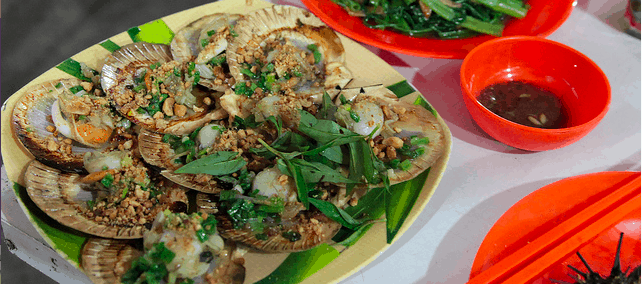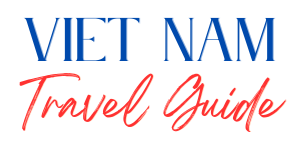Embarking on a culinary adventure in Vietnam is a delightful experience for food enthusiasts around the world. With its vibrant flavors, fresh ingredients, and diverse cuisine, Vietnamese food has earned a reputation for being among the best globally. Whether you’re a seasoned traveler or a first-time visitor, it’s essential to understand how to navigate food allergies and restrictions while still savoring the mouthwatering delicacies this country has to offer. In this article, we’ll provide you with valuable insights and practical tips to ensure an unforgettable and safe dining experience in Vietnam.

Gluten-Free Delights: Exploring Vietnamese Cuisine without Gluten
Vietnamese cuisine, which heavily relies on rice, offers a relatively easy dining experience for those following a gluten-free diet. However, it’s important to exercise caution and remain vigilant. While most noodle products, rice paper, and broken rice are primarily made from rice, they may sometimes contain tapioca and wheat flour. To be on the safe side, opt for dishes with “com” in their names, indicating the presence of white rice.
Additionally, it’s crucial to steer clear of dishes containing soy sauce, as most soy sauces include wheat. Surprisingly, Vietnamese sausages and patés can also contain soy sauce and wheat products, even without an apparent taste. To avoid any potential issues, it’s recommended to avoid processed meat altogether. Fortunately, fish sauce, a common condiment in Vietnamese cuisine, provides ample flavor without relying on soy sauce.
If you prefer to cook your own meal at home or your hotel, Annam Gourmet Grocery at 16-18 Hai Ba Trung offers a variety of gluten-free products to cater to your dietary needs. Furthermore, we’ve provided gluten-free translation cards (Gluten-free translation card 1 and Gluten-free translation card 2) to help you communicate your limitations effectively to restaurant staff and identify foods to avoid.
Navigating Dairy-Free Options: Enjoying Vietnamese Cuisine sans Dairy
 Vietnamese coffee is usually served with a generous amount of condensed milk at the bottom.
Vietnamese coffee is usually served with a generous amount of condensed milk at the bottom.


Avoiding dairy products in Vietnam is relatively straightforward. Simply steer clear of coffee with condensed milk and most sweets. However, exercise caution when consuming bakery products, particularly white bread, as they may contain traces of milk.
Individuals with peanut allergies may face a more challenging experience while enjoying Vietnamese cuisine. Peanuts, as well as other nuts like cashews, are prevalent in Vietnamese dishes, manifesting as spices, cooking oils, and components of sauces and condiments. When dining at restaurants, effective communication and trust-building with the chefs become crucial. Even if your chosen dish doesn’t contain peanuts, cross-contamination is likely due to the staple use of peanuts in Vietnamese kitchens.
Pho and other soup-like dishes generally provide safer options as they rarely incorporate nuts or nut oils. Nevertheless, it’s essential to inform the chefs about your allergies to ensure they can take appropriate precautions. To help you communicate your peanut allergy effectively, we’ve provided translation cards (No peanuts and nuts translation card) for your convenience.
Vegetarian and Vegan Delights: Embracing Plant-Based Cuisine in Vietnam
Finding vegetarian and vegan food in Vietnam is relatively easy, thanks to the country’s strong Buddhist influence. Although meat is widely consumed, fasting practices during specific days and auspicious times have given rise to numerous vegetarian restaurants. Locals frequently flock to these establishments, particularly on the 1st and 15th days of the lunar month.
Vietnam offers an abundance of vegetarian restaurants that cater to diverse dietary needs, some of which are entirely vegetarian. However, if you’re traveling with non-vegetarians, tourist-oriented restaurants can be a safe choice. For instance, in Ho Chi Minh City’s Backpacker Area, you’ll find local eateries serving a variety of dishes, including a dedicated vegetarian section. Similarly, along popular roads like Dong Khoi Street or within large shopping centers, vegetarian-friendly restaurants abound.
While some local restaurants may exclude meat from your food, avoiding condiments like fish sauce can prove challenging. Additionally, strict vegetarians should be cautious when consuming bread products, as many baguettes contain egg yolks. To ensure a meat-free meal, make use of our vegetarian/vegan translation card when communicating with restaurant staff.

By equipping yourself with the necessary knowledge and tools, you can fully enjoy Vietnam’s culinary wonders without compromising your dietary restrictions or allergies. Remember to print out translation cards, effectively communicate with restaurant staff, and familiarize yourself with essential keywords. Though it may initially seem daunting, your adventurous spirit and willingness to learn will allow you to indulge in a unique and complete culinary experience, free from any concerns. Bon appétit!
